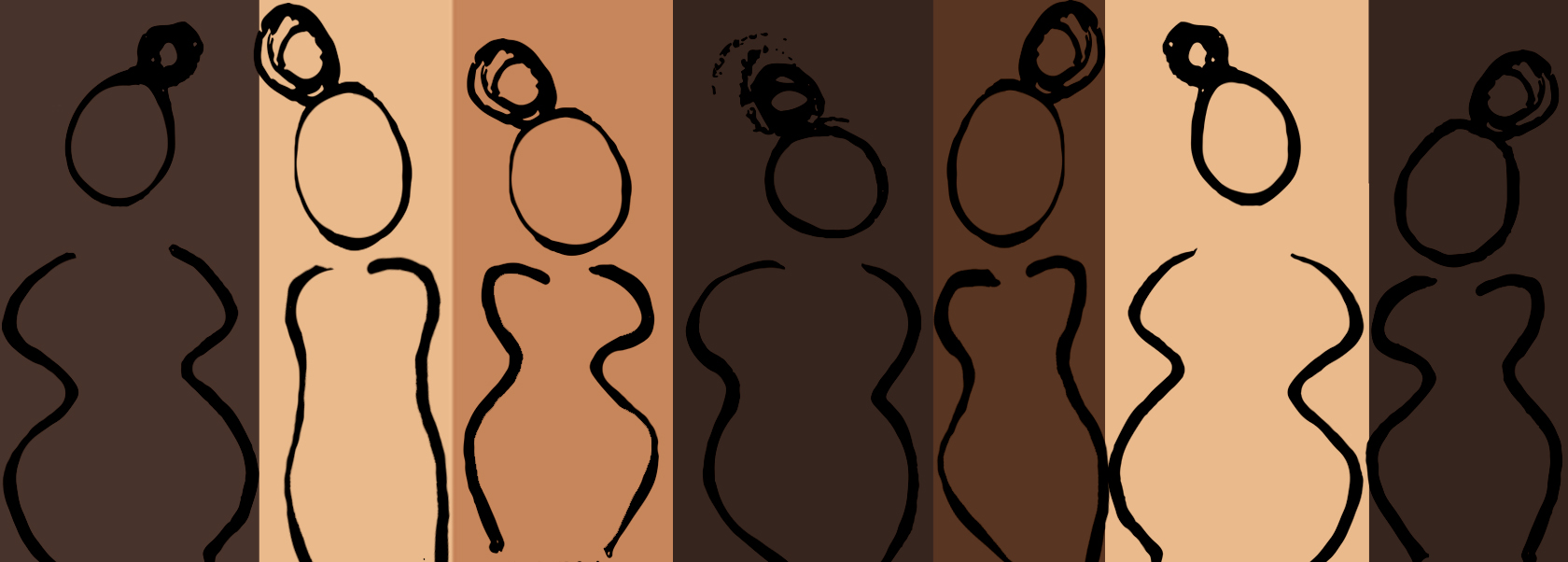The fashion industry has always broken barriers. Kanye West’s Yeezy Season 3 consisted solely of models of color. Chromat founded in 2010 by Becca McCharen infuses architecture with fashion, is no stranger to diversity. Lauren Wasser, a model who lost her leg after suffering from toxic shock syndrome, walked the runway during New York Fashion Week at Milk. Chromat also features transgender models such as Isis King.
And now is the time for the industry to continue to welcome those who aren’t typically the faces of fashion.
“It’s really important that we have diversity so that girls don’t think that they have to look like this to be beautiful,” said Amanda Zaldivar, a 19-year-old communications major at Parsons who recognizes the importance in having equal and realistic representation because “It’s fashion. People want to see what that clothing would look like on their body, and everyone else has a different body.”
“The beauty norm is changing and differences that used to be weaknesses are now turning into strengths,” said Clementine Desseaux in her interview with Jezebel.com. She is a French plus size model who became the face of Christian Louboutin’s lipstick line in 2015. “Now beauty is changing and brands are putting girls that are different in the spotlight. They are opening up to all the beauty that is in the world and not only the European, blond, skinny, white woman type.” Jezebel.com and Refinery29.com reported that she is the first plus size model to be the face of the high-end brand.
Diversifying pages within a magazine or on a runway by incorporating plus size models, people of color, different heights, shapes, sizes, and even people who aren’t able bodied is imperative. Creating an inclusive environment without awkwardly segregating the “diverse” models from the mainstream ones allows consumers to see adequate, realistic representations of themselves.
“I think [representation] is important to show variety so younger kids can see representation and know everyone’s important no matter what race, size, ethnicity, anything like that,” said Dashae Roberts, a 19-year-old fashion design major at Parsons.
By appealing to a larger audience, it is easier to welcome and accept diversity by naturalizing the concept.
As a future designer, Roberts has a way of implementing diversity without segregation, and appealing her clothes to the masses without targeting one specific consumer. She plans to use campaigning and “fashion shows to show multiple races of different sizes, multiple genders, like using everyone and not just having all white people or all black people [but] having a wide range of people.”
“Fashion are clothes that relate to what’s going on,” said Hara Estroff Marano, editor of Psychology Today and author of Style is Not a Size. “Style extends beyond fashion. Style is within the wearer.” The person wearing the clothes represents their individual style and personality, but it is also the responsibility of the fashion designer to create clothes that embrace norms that challenge existing biases. Such biases often disregard you if you aren’t “pretty enough.”
Plus-size model, Elizabeth Taylor spoke of her time at an acting agency, where they said she was “too fat to be the pretty girl, but too pretty to be the fat girl.”
Seeing diversity–-in race, gender identification, the ability to be able-bodied-–promotes self appreciate outside of the fashion industry. To enter a fitting room and feel validated, not violated is an amazing, life-changing experience.
There is no singular epitome of beauty–but by constantly being subjected to an entire industry’s perception of beauty is crippling, often leading one to seek external validation for feeling worthy enough. Taylor recited a quote from a friend who said, “Men tailor their clothes to fit their bodies, while women tailor our bodies to fit the clothes.” Rather than seeing something wrong with the garment, some women will assume something’s wrong with their body.
In having a campaign or runway welcoming a wide range of models from different backgrounds, sizes, shapes, and colors, “you could cater towards a bigger audience rather than singling out a specific quality about a person,” said Allen Hu, 19-year-old communications major at Parsons.
“The fashion industry is like a clique,” said Hugette Hubard, vice president of design at Lane Bryant. It’s this “you can’t sit with us” complex if you are different from the status quo. Yet the divide between what constitutes beauty is why representation matters, because although beauty is subjective, people like to see positive portrayals of them. Especially when you are impressionable and question why runway models don’t look like you.
Despite the fashion industry getting a bad reputation for being selective, that provides framework for aspiring designers to dismantle that idea. To bring about realistic representations so social norms are celebrated, embraced, and understood–not to be awkwardly segregated, or toy with the idea of tokenism.
So is creativity in the name of fashion worth more than a person’s ability to feel accepted and respected?
“Diversity is more important than me having to go back to my work,” said 18-year old Diane Dahyun Kwak, a fashion design Parsons student.
And hopefully future designers will think the same.
Illo: Orlando Mendiola







